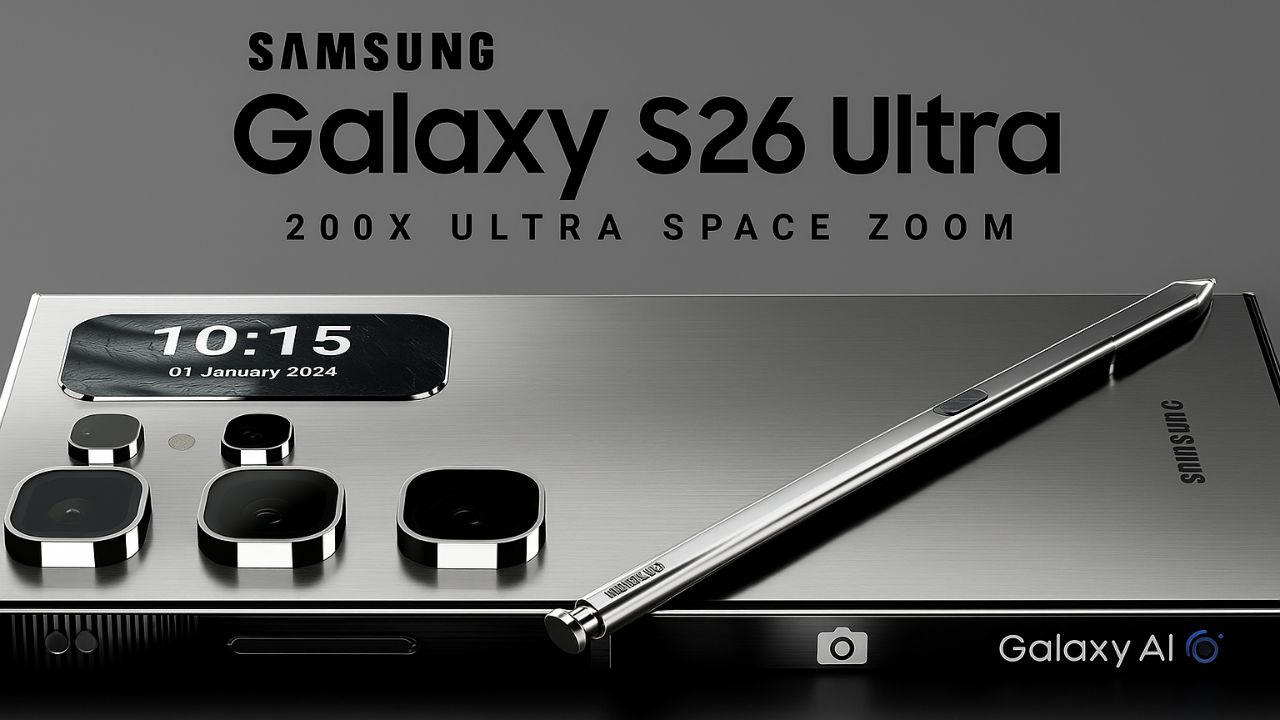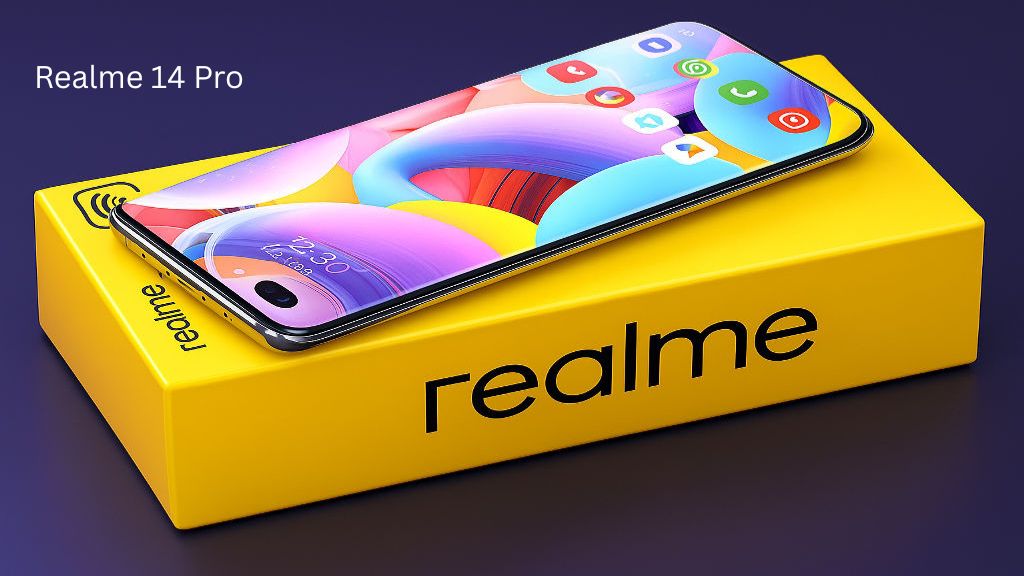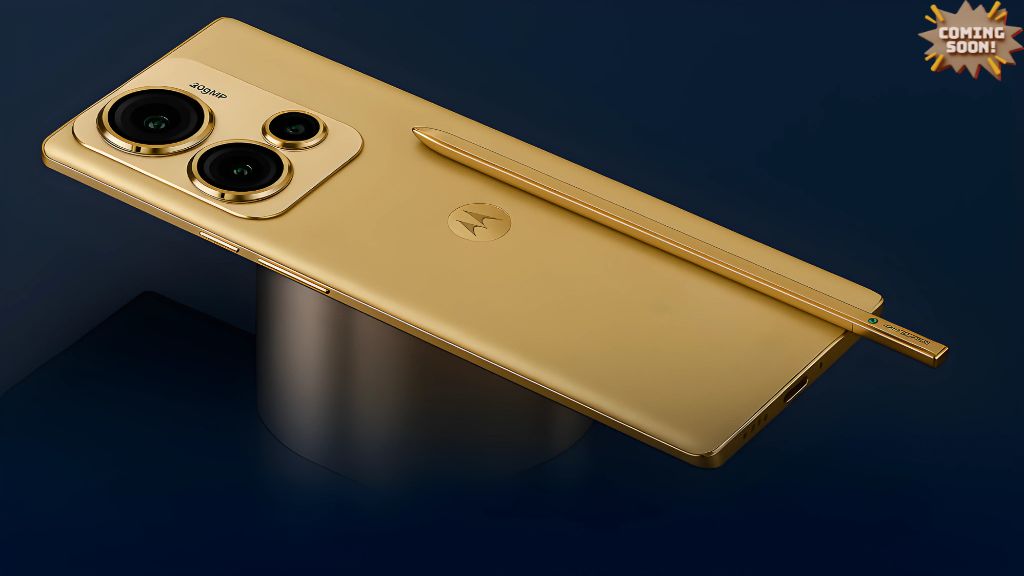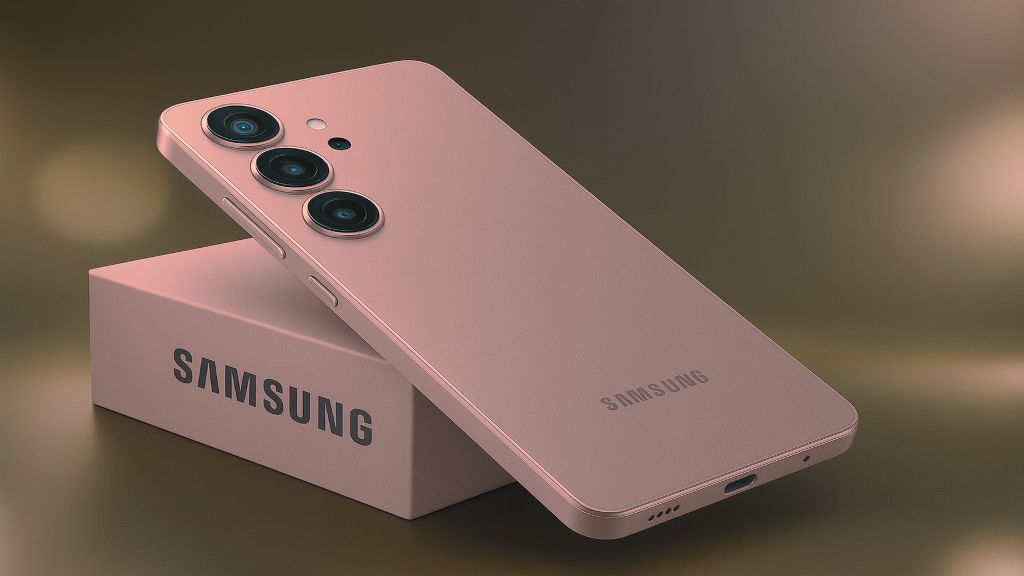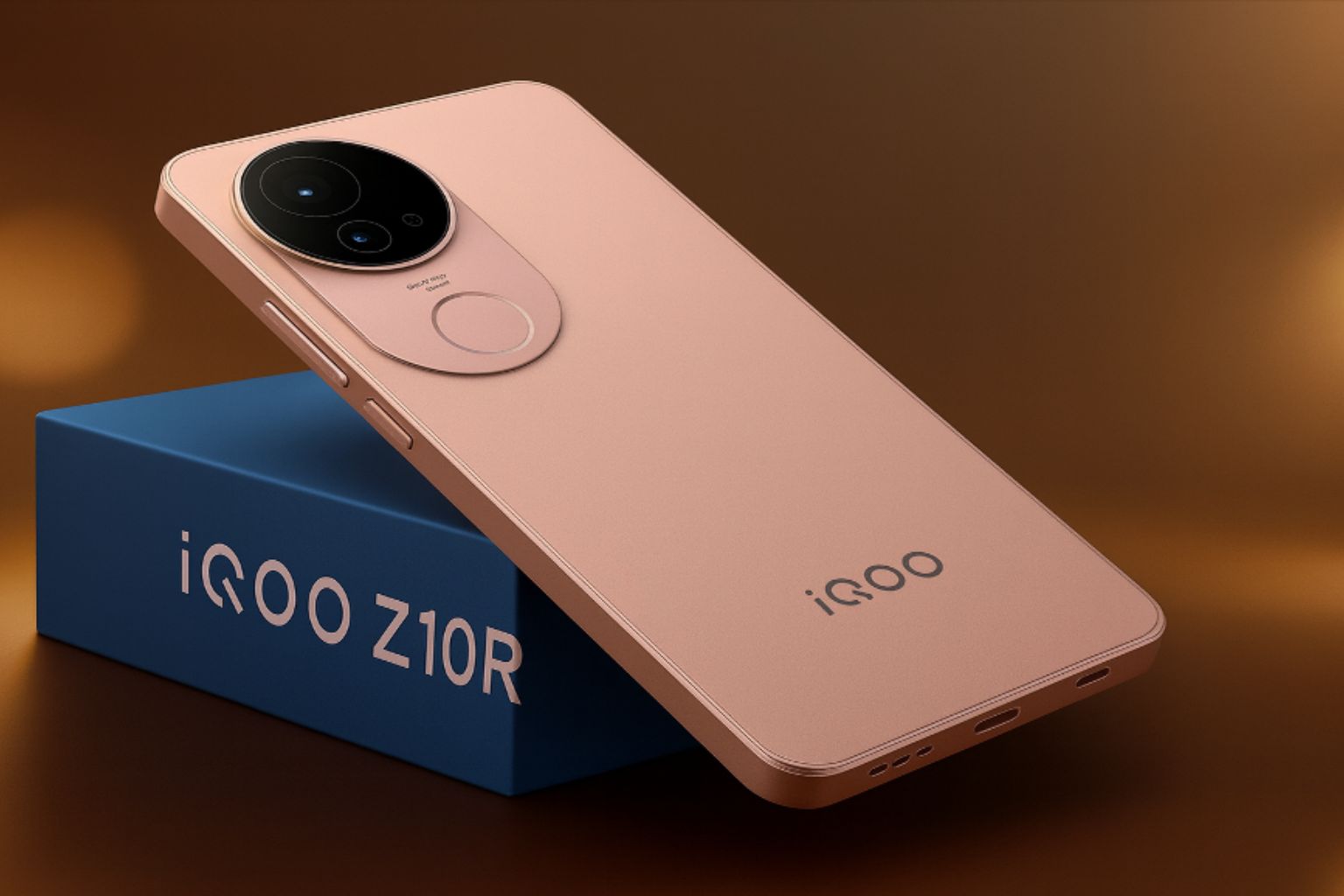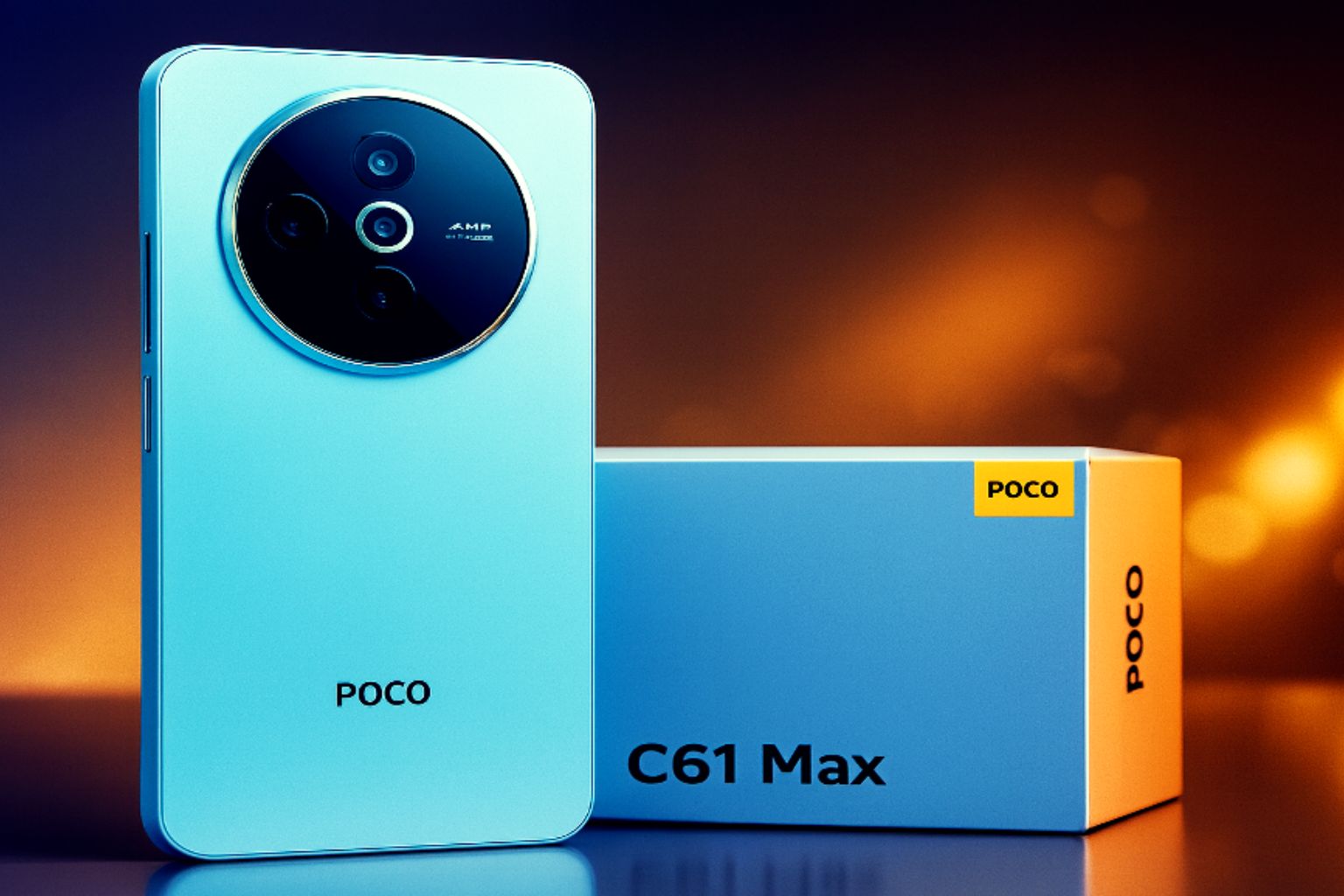Samsung’s Galaxy S26 Ultra line has defined the Android flagship experience for more than a decade, and every new generation sets off a fresh wave of speculation long before launch day. The rumored Galaxy S26 Ultra—expected to arrive in the first quarter of 2026—has already begun stirring excitement among tech insiders, component suppliers, and fans alike.
Samsung Galaxy S26 Ultra Leaks Ignite Early Hype for 2026
Early leaks paint a picture of a phone that pushes boundaries on every front: colossal camera hardware, a next‑generation OLED display, bleeding‑edge silicon, and an ecosystem of on‑device artificial‑intelligence features that could change how we interact with our smartphones.
While Samsung will not confirm details until its customary Unpacked event—likely in February 2026—the drip‑feed of industry reports, patent filings, and supply‑chain whispers offers enough material to trace the outlines of what is shaping up to be the most ambitious Galaxy yet.
Projected Release Date and Samsung’s Refined Launch Rhythm–Galaxy S26 Ultra
Observers expect Samsung to unveil the Galaxy S26 Ultra family during the first week of February 2026, maintaining the cadence established with the S24 and S25 generations. That timing lets the company dominate headlines just as the new year begins, driving preorders through the quiet post‑holiday retail window and stealing momentum from rivals preparing spring launches. Internally, the device is said to be codenamed “Diamond Zero,” a designation hinting at top‑tier materials and a design language that embraces both refinement and resilience.
Mass production of display panels reportedly begins in late November 2025, giving Samsung roughly ten weeks to stockpile enough units for a worldwide February rollout. Carrier testing typically starts six months prior to launch, so partners in the United States, Europe, South Korea, and India are likely already evaluating pre‑production hardware to certify 5G bands, emergency satellite connectivity, and regional firmware customizations.
If Samsung follows tradition, press invites for the Unpacked keynote will hit inboxes in early January 2026, and the phone will land in stores two to three weeks after the stage presentation, with preorders offering storage upgrades or Galaxy Buds bonuses to drive early adoption.
Galaxy S26 Ultra: Design Evolution: From Armor Aluminum to Aerospace‑Grade Titanium
Visual leaks suggest the Galaxy S26 Ultra will preserve the squared‑off silhouette and integrated S Pen that have become hallmarks of the Ultra tier, but with subtler curves and a new aerospace‑grade titanium frame that delivers increased rigidity at a lighter weight. Renderings show chamfered side rails, symmetrical bezels, and a softer rear‑glass curvature that should improve in‑hand comfort despite the device’s rumored 6.9‑inch display.
That panel is said to be Samsung Display’s first “Dynamic AMOLED 3X” iteration, sporting a peak brightness near 3,000 nits, a wider 88 percent DCI‑P3 color coverage, and an adaptive refresh window stretching from an ultra‑efficient 1 Hz to a gamer‑pleasing 144 Hz. At the top sits a second‑generation under‑display camera with a higher pixel density over the sensor area, reducing diffraction rings that plagued earlier implementations and allowing for truly full‑screen video playback.
The cover glass reportedly moves to Corning Gorilla Glass Armor 2, which blends improved scratch resistance with an anti‑reflective nano‑texture that diminishes daylight glare by nearly 75 percent compared with the S24 Ultra. Combined with an IP68 rating and a subtly reengineered vapor‑chamber cooling plate, the Galaxy S26 Ultra aims to be both tougher and cooler under sustained loads.
Galaxy S26 Ultra Silicon Powerhouse: Exynos 2500 or Snapdragon 9 Gen 4, and the Birth of “Galaxy AI 3.0”
Samsung’s dual‑sourcing strategy for chipsets appears intact, though insiders point to a more ambitious leap in computational photography and on‑device intelligence. In North America and China, the phone will likely run Qualcomm’s Snapdragon 9 Gen 4, fabricated on TSMC’s 3 nm process and boasting redesigned Oryon CPU cores, a next‑gen Adreno GPU with real‑time path‑tracing acceleration, and an NPU capable of 80 TOPS (trillions of operations per second).
European and Korean units are tipped to feature Samsung’s Exynos 2500, built on the company’s own 2.5 nm gate‑all‑around node. Early benchmarks allegedly show parity—or even a slight graphics lead—for the Exynos variant, a testament to Samsung’s investment in AMD RDNA 3+ IP and more efficient LPDDR6X memory controllers clocked at 10,000 Mbps. Storage shifts to UFS 5.0, bumping sequential reads beyond 7 GB/s and slashing game‑load times.
Most intriguing, however, is the leap from “Galaxy AI” introduced with the S24 series to a full “Galaxy AI 3.0” framework that leverages those beefier NPUs. Reports describe offline large‑language‑model inference for tasks such as instant voice transcription and translation, generative wallpaper creation, and context‑aware S Pen commands that turn rough sketches into polished charts.
Rumors also hint at “Perception Engine,” an always‑on module analyzing ambient sounds and on‑screen content to offer proactive suggestions—like pulling up a boarding pass when the device hears an airport gate announcement. All of these features are said to run entirely on device, ensuring privacy while reducing cloud latency.
Galaxy S26 Ultra Camera Colossus: 1‑Inch Primary Sensor, Variable Aperture, and a 200 MP “HP2 Neo”
The showpiece upgrade comes in imaging. Supply‑chain chatter indicates Samsung will finally adopt a full 1‑inch sensor for the primary wide camera, supposedly branded “ISOCELL HP2 Neo,” offering 200‑megapixel resolution but binned defaults of 16 MP at night and 50 MP in good light. The leap in sensor size promises shallower depth of field, greater dynamic range, and significantly cleaner low‑light captures.
Engineers are testing a six‑blade variable aperture that can step from f/1.4 for bokeh‑rich portraits all the way to f/4.0 for daylight landscapes where corner sharpness matters. Complementing the main sensor is a refreshed 50 MP periscope module enabling true 10× optical zoom and a new “Fusion Zoom” algorithm that stitches data from the primary, periscope, and 12 MP ultrawide (now with autofocus) to achieve lossless quality up to 30×.
Leaked camera‑app screenshots reference “Astro‑Hyperlapse” and “Night Portrait Video,” suggesting Samsung will lean heavily into astrophotography and cinematic low‑light clips. The phone can purportedly record 8K at 60 fps without a crop and 4K at up to 240 fps, useful for buttery‑smooth slow‑motion. A dedicated ISP block called “Tripod Lock” uses gyro data to detect when the phone is resting on a stable surface, allowing multi‑second exposures without user intervention.
On the front, the under‑display camera remains 12 MP but benefits from enhanced AI de‑diffraction and multi‑frame fusion for selfie quality comparable to punch‑hole shooters. Add in two sub‑millimeter laser autofocus sensors hidden behind the glass, and the S26 Ultra shapes up as Samsung’s most versatile photography tool yet.
Galaxy S26 Ultra- Battery, Charging, and a New Focus on Longevity
The Galaxy S26 Ultra reportedly houses a 5,500 mAh stacked‑layer battery, a design that minimizes internal height while increasing energy density. Samsung is said to be switching from traditional graphite to a fluorinated electrolyte additive and a silicon‑rich anode, boosting cycle life by nearly 20 percent and enabling higher peak discharge rates for gaming. The device supports 65 W wired charging, 50 W Fast Wireless Charge 2.0, and 15 W reverse wireless power‑share, useful for topping up earbuds or the forthcoming Galaxy Ring wearable.
Thermal throttling during fast‑charge is mitigated by an active‐heat‑spreader design that routes waste heat toward the titanium frame—cleverly using the enclosure itself as a heat sink. Samsung insiders claim the phone can complete a full 0‑to‑100 percent charge in under 35 minutes with a certified PPS charger, while a new “Battery Guardian” AI mode learns daily routines and caps overnight charging at 80 percent unless a calendar event suggests early travel.
Galaxy S26 Ultra: Software, One UI 8.0, and Seven Years of Updates
Debuting with Android 16 and One UI 8.0, the Galaxy S26 Ultra is poised to become one of the longest‑supported Android phones on the market. Samsung insiders hint at a commitment to seven major OS upgrades and eight years of security patches, pushing longevity close to (or beyond) that offered by Google’s Pixel portfolio. One UI 8.0 refines Samsung DeX, allowing the phone to wirelessly power a 4K external monitor at 120 Hz with low‑latency pen input, effectively turning the Galaxy S26 Ultra into a portable workstation.
A rumored “Game Genie” overlay exposes GPU clocks, memory stats, and per‑scene HDR toggles while streaming to YouTube or Twitch—all features that will delight mobile‑esports players. Privacy‑conscious buyers will appreciate the expanded Knox Matrix, which creates an end‑to‑end encrypted mesh between the phone, Galaxy Book laptops, Wear OS watches, and SmartThings IoT hubs, facilitating local data sync without hitting Samsung’s cloud.
Galaxy S26 Ultra Connectivity: Wi‑Fi 8, Satellite SMS, and Ultra‑Wideband 2
Leaked schematics reveal an updated radio stack with Qualcomm’s FastConnect 9400 or Samsung’s own Marvell‑based combo chip, both supporting the Wi‑Fi 8 standard (802.11be), which promises multi‑link operation at up to 40 Gbps theoretical throughput in ideal conditions. 5G remains central, with a new Snapdragon X80 modem supporting 3GPP Release 18 features such as improved carrier aggregation across sub‑6 and mmWave simultaneously, delivering lower latency for cloud gaming and AR applications.
Perhaps more user‑visible is the inclusion of two‑way satellite messaging: unlike earlier emergency‑only implementations, the Galaxy S26 Ultra will reportedly allow short SMS‑length communications from anywhere, leveraging geosynchronous S‑band satellites and the NTN modem baked into the Snapdragon and Exynos platforms.
For close‑range tasks, Ultra‑Wideband 2 triples spatial resolution, making AR object placement more precise and turning the phone into a near‑instant digital car key for a growing roster of automakers. Pair that with Bluetooth LE Audio enhancements and Samsung’s low‑power lossless codec, and the phone becomes a versatile hub for next‑generation audio accessories.
Galaxy S26 Ultra: Pricing Forecast and Storage Configurations
Analysts expect Samsung to hold the entry price steady despite ramped‑up bill‑of‑materials costs, partly offsetting them with a higher‑margin 1 TB tier. Tentative leaks list three SKUs: 256 GB at $1,399 USD (₹1,29,999 in India), 512 GB at $1,519, and 1 TB at a wallet‑stretching $1,699. European pricing often tracks slightly higher after VAT, so €1,449 for the base model seems plausible. Pre‑order perks may include a complimentary year of Microsoft 365 cloud storage, an S Pen Pro 2 stylus upgrade, or a limited‑edition titanium gray colorway.
Samsung’s trade‑in program will play a pivotal role in softening sticker shock, with rumors of $800 credits for last‑year Ultras in pristine condition and $500 even for devices with moderate screen burn‑in. Carrier financing will spread the cost over 36‑month contracts, making the S26 Ultra accessible to a wider range of buyers without upfront outlay.
Galaxy S26 Ultra: Competitive Landscape and the Stakes for Samsung
By early 2026, Apple’s iPhone 17 Pro Max, Google’s Pixel 10 Ultra, and Xiaomi’s 16 Ultra will all vie for flagship mindshare. Each brings its own strengths—Apple’s A20 Pro delivering unmatched single‑core performance, Google leaning on Tensor G5 AI prowess, and Xiaomi pushing 120 W wireless charging—but Samsung’s advantage could lie in the breadth of its ecosystem.
From Galaxy Books that unlock seamless multi‑control to budding AR glasses rumored for late 2026, the S26 Ultra sits at the center of a web of devices that share services, accessories, and interface conventions. If leaks prove accurate, Samsung’s camera innovations and on‑device AI differentiation may give it the edge in a market where hardware parity has converged.
At the same time, the company must execute flawlessly. A rocky Exynos launch, lackluster thermal performance, or perceived stagnation in design could send premium buyers to rival camps. Foldable phones will be maturing, too, and some enthusiasts might opt for the flexibility of a Z Fold 8 instead of a slab, raising the bar for what the Galaxy S26 Ultra must deliver. In short, the S26 Ultra headline specs will grab attention, but real‑world polish—battery endurance, update reliability, camera tuning consistency—will determine whether Samsung retains its status as the default Android super‑phone.
Galaxy S26 Ultra: What We’re Likely to See in Early 2026
Putting together the most credible leaks, we can outline the Galaxy S26 Ultra experience that buyers may encounter within nine months: a titanium‑clad rectangle measuring roughly 79 mm wide, 163 mm tall, and just under 8.9 mm thick, weighing 221 grams; a 6.9‑inch Dynamic AMOLED 3X display delivering 3,000 nit HDR brightness; Snapdragon 9 Gen 4 or Exynos 2500 silicon with LPDDR6X memory and UFS 5.0 storage; a 200 MP 1‑inch primary camera flanked by a 50 MP 10× periscope,
a 12 MP ultrawide, and a laser‑rigged autofocus array; a 5,500 mAh high‑density battery replenished at 65 W; and One UI 8.0 with Galaxy AI 3.0, promising offline generative features and seven years of software support. Wrapping it all together is satellite messaging, Wi‑Fi 8, Ultra‑Wideband 2, and ecosystems hooks that stretch from tablets to smart rings.
In other words, Samsung is positioning the S26 Ultra as the ultimate all‑rounder: the creative’s camera rig, the gamer’s mini console, the professional’s pocket PC, and the explorer’s lifeline in remote areas—an everything‑device for an era when many consumers upgrade less often but demand more each cycle.
Final Thoughts: Countdown to the Next Ultra
If history holds, Samsung will spend the coming months drip‑feeding teasers, carrier partners will leak model numbers, and protective‑case listings will reveal subtle design tweaks long before Timothee Chalamet‑style ads hit prime‑time TV slots. Yet even at this early stage, the contours of the Galaxy S26 Ultra already feel familiar: bigger sensor, smarter silicon, brighter screen, longer battery life, thicker wallet. What stands out this generation is the way these elements converge around AI—executed locally, not in the cloud—to create immediate, context‑aware experiences that could save time, spark creativity, or even ensure safety in places where cellular networks fail.
Samsung’s ambition for early 2026 is clear: deliver a device that feels a full step ahead, not a half‑step refinement. Should the rumored specifications solidify into reality, the Galaxy S26 Ultra will embody that ambition, setting a benchmark that competitors must scramble to match. For now, enthusiasts can only circle February 2026 on their calendars, track every certification listing, and watch the rumor mill spin—but the outline is already visible, and it looks like Samsung’s best Galaxy yet.
